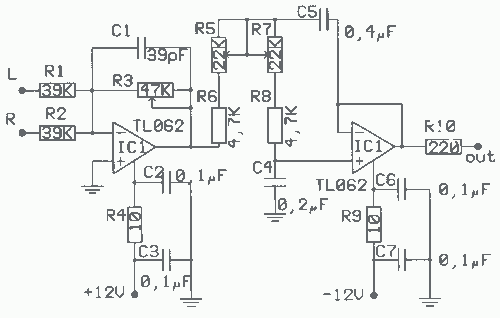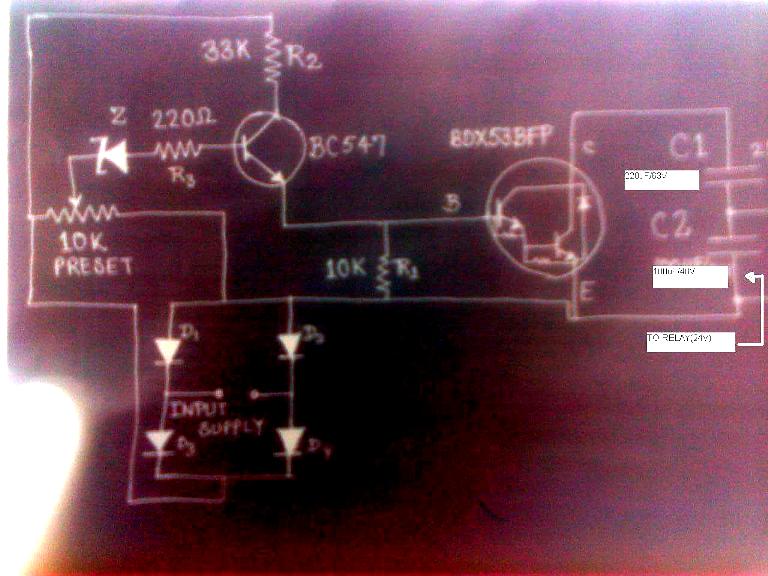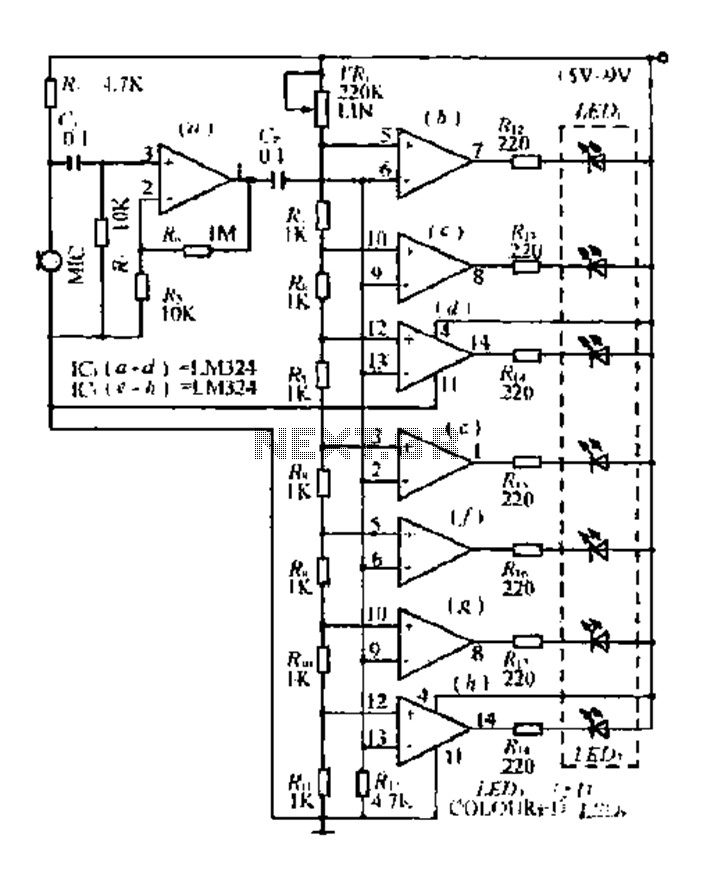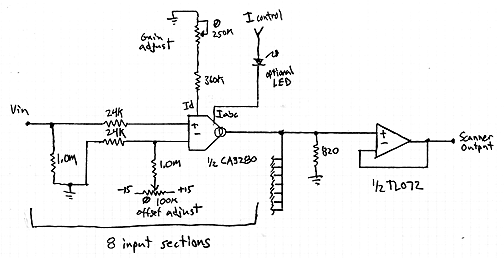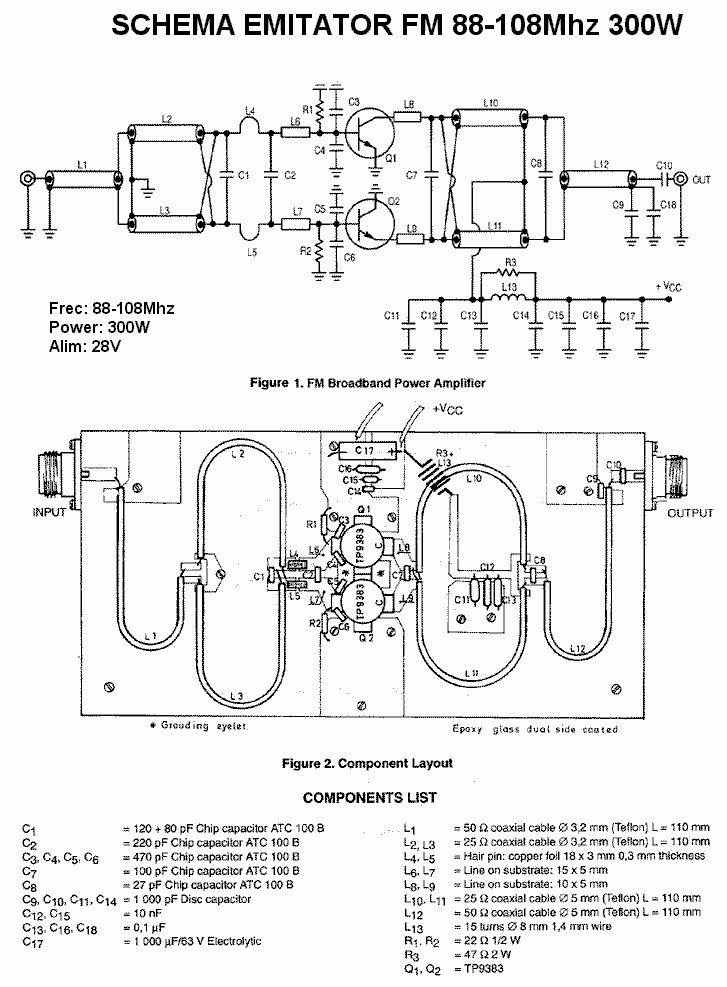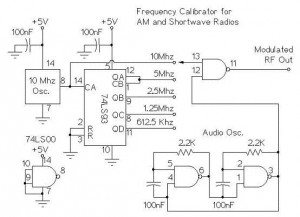
5 Zone Alarm Circuit
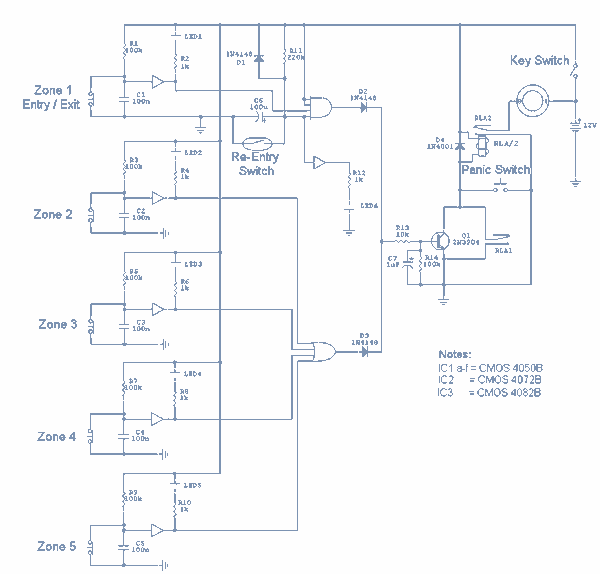
Each zone uses a normally closed contact. These can be micro switches or standard alarm contacts (usually reed switches). Zone 1 is a timed zone which must be used as the entry and exit point of the building. Zones 2 - 5 are immediate zones, which will trigger the alarm with no delay. Some RF immunity is provided for long wiring runs by the input capacitors, C1-C5. C7 and R14 also form a transient suppresser. The key switch acts as the Set/Unset and Reset switch.
The described circuit operates as a security alarm system featuring multiple zones, each utilizing normally closed contacts. These contacts can be implemented using micro switches or standard alarm contacts, typically reed switches, which are known for their reliability in security applications. The system is designed with five zones: Zone 1 serves as a timed entry and exit point, necessitating a delay to allow authorized individuals to enter or exit without triggering the alarm. In contrast, Zones 2 through 5 are configured as immediate zones, designed to trigger the alarm instantaneously upon activation.
For the purpose of ensuring reliable operation over extended wiring distances, the circuit incorporates input capacitors (C1-C5) that provide RF immunity. This feature is critical in environments where electromagnetic interference might affect the performance of the alarm system. Additionally, components C7 and R14 are included to form a transient suppressor, which protects the circuit from voltage spikes that could occur due to switching transients or other electrical disturbances.
A key switch is integrated into the design to facilitate user interaction with the system, allowing for setting, unsetting, and resetting of the alarm. This switch plays a crucial role in the overall functionality, enabling users to manage the security state of the system effectively. The combination of these elements creates a robust alarm system capable of providing security across multiple zones while maintaining reliability and user-friendly operation.Each zone uses a normally closed contact. These can be micro switches or standard alarm contacts (usually reed switches). Zone 1 is a timed zone which must be used as the entry and exit point of the building. Zones 2 - 5 are immediate zones, which will trigger the alarm with no delay. Some RF immunity is provided for long wiring runs by the input capacitors, C1-C5. C7 and R14 also form a transient suppresser. The key switch acts as the Set/Unset and Reset switch. 🔗 External reference
The described circuit operates as a security alarm system featuring multiple zones, each utilizing normally closed contacts. These contacts can be implemented using micro switches or standard alarm contacts, typically reed switches, which are known for their reliability in security applications. The system is designed with five zones: Zone 1 serves as a timed entry and exit point, necessitating a delay to allow authorized individuals to enter or exit without triggering the alarm. In contrast, Zones 2 through 5 are configured as immediate zones, designed to trigger the alarm instantaneously upon activation.
For the purpose of ensuring reliable operation over extended wiring distances, the circuit incorporates input capacitors (C1-C5) that provide RF immunity. This feature is critical in environments where electromagnetic interference might affect the performance of the alarm system. Additionally, components C7 and R14 are included to form a transient suppressor, which protects the circuit from voltage spikes that could occur due to switching transients or other electrical disturbances.
A key switch is integrated into the design to facilitate user interaction with the system, allowing for setting, unsetting, and resetting of the alarm. This switch plays a crucial role in the overall functionality, enabling users to manage the security state of the system effectively. The combination of these elements creates a robust alarm system capable of providing security across multiple zones while maintaining reliability and user-friendly operation.Each zone uses a normally closed contact. These can be micro switches or standard alarm contacts (usually reed switches). Zone 1 is a timed zone which must be used as the entry and exit point of the building. Zones 2 - 5 are immediate zones, which will trigger the alarm with no delay. Some RF immunity is provided for long wiring runs by the input capacitors, C1-C5. C7 and R14 also form a transient suppresser. The key switch acts as the Set/Unset and Reset switch. 🔗 External reference
